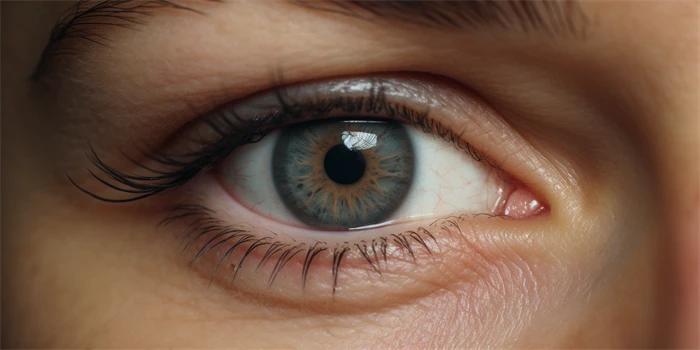Asian blepharoplasty, also known as double eyelid surgery, is a popular cosmetic procedure among individuals of Asian descent. This surgery aims to create a natural-looking crease in the upper eyelid, enhancing the eyes' appearance. While the surgery itself is relatively straightforward, it's essential to understand the healing process and how to speed up recovery for optimal results. In this article, we'll provide valuable insights into the Asian blepharoplasty healing process, addressing different stages of the reader's journey and providing practical advice to ensure a smooth recovery.

1. Preparing for Surgery
Before undergoing Asian blepharoplasty, it's crucial to have a thorough consultation with a qualified surgeon who specializes in the procedure. During this consultation, you'll discuss your goals, medical history, and any concerns you may have. The surgeon will also explain the procedure, potential risks, and post-operative care instructions. Following these instructions meticulously is key to a successful recovery.
1a. Personal Story: Grace's Journey to Asian Blepharoplasty
Grace had always felt self-conscious about her monolid eyes and decided to undergo Asian blepharoplasty to achieve a more defined eyelid crease. She chose a reputable surgeon who made her feel comfortable during the consultation, walking her through every step of the process and addressing her concerns. Grace diligently followed the pre-operative instructions, ensuring she was physically and mentally prepared for her surgery.
2. The Surgery Day
The day of your Asian blepharoplasty surgery can understandably be nerve-wracking. Arriving early to the surgical facility and having a support person with you can help ease anxiety. Once you're in the operating room, the surgeon will administer anesthesia to ensure your comfort throughout the procedure. The surgery typically takes about an hour, depending on the complexity of the case.
2a. Expert Advice: Dr. Kim's Tips for Surgery Day
Dr. Kim, a renowned oculoplastic surgeon, recommends patients to have a light, balanced breakfast on the day of surgery and to wear loose, comfortable clothing. He advises against wearing makeup or contact lenses and encourages patients to ask any last-minute questions they may have before being taken into the operating room. Following these recommendations ensures a smooth and stress-free surgery day.
3. Immediate Post-Operative Care
Once the surgery is complete, you'll spend some time in the recovery room under observation. Your eyes may be covered with ointment and a protective dressing to minimize swelling. The surgeon will provide instructions for cleaning your eyes, prescribed medications, and the importance of keeping your head elevated while resting.
3a. Patient Perspective: Emily's First Day After Surgery
Emily felt a slight pressure on her eyelids immediately after waking up from surgery. Her nurse kindly explained that it was normal and provided her with written instructions on how to care for her eyes at home. Emily appreciated the clear guidance and rested comfortably at home, following the prescribed medications and keeping her head elevated as instructed.
4. Managing Swelling and Discomfort
After Asian blepharoplasty, it's common to experience swelling and discomfort around the eyes. Applying cold compresses, prescribed eye drops or ointments, and taking pain medication as advised can help manage these symptoms. Sleeping with an extra pillow or sitting in a reclined position may also alleviate swelling.
4a. Expert Advice: Dr. Li's Tips for Swelling Management
Dr. Li, a skilled plastic surgeon, suggests using cold compresses intermittently for the first 48 hours after surgery, as it helps reduce inflammation and discomfort. She advises patients to avoid excessive heat, such as hot showers or steamy environments, as it can increase swelling. Following these guidelines can significantly speed up the recovery process.
5. Maintaining Proper Eye Hygiene
Proper eye hygiene plays a crucial role in preventing infection and promoting healing. Following your surgeon's instructions on how to clean your eyes and apply prescribed ointments or drops is vital. Avoiding rubbing or touching your eyes excessively is also important during the healing period.
5a. Patient Perspective: David's Commitment to Eye Hygiene
David diligently followed his surgeon's advice on eye hygiene after his Asian blepharoplasty. He made sure to wash his hands thoroughly before touching his eyes, using a sterile gauze pad to gently clean the area. David's commitment to proper eye hygiene paid off, and his recovery progressed smoothly.
6. Gradual Return to Normal Activities
While you may feel eager to jump back into your regular routine after Asian blepharoplasty, it's important to allow your body time to heal. Your surgeon will provide guidelines on when it's safe to resume normal activities, such as wearing makeup, exercising, and wearing contact lenses.
6a. Expert Advice: Dr. Wong's Tips for Resuming Normal Life
Dr. Wong, a reputable plastic surgeon, advises patients to avoid strenuous activities for at least two weeks post-surgery to prevent complications and ensure proper healing. She reminds patients that everyone's recovery timeline is unique, and it's essential to listen to their bodies and not rush the process.
Frequently Asked Questions:
Q: How long does it take to recover from Asian blepharoplasty?
A: The initial healing period typically lasts one to two weeks, but complete resolution of swelling and final results may take several months.
Q: Will there be scarring after Asian blepharoplasty?
A: The incision lines are typically well-hidden along the natural crease of the eyelid, resulting in minimal visible scarring.
Q: When can I wear makeup after Asian blepharoplasty?
A: It's generally safe to start wearing makeup around two weeks after surgery, but consult with your surgeon for specific instructions.
Q: Can I expect permanent results from Asian blepharoplasty?
A: Asian blepharoplasty provides long-lasting results, but natural aging and factors like weight fluctuations can affect the outcome over time.
Q: Are there any risks or complications associated with Asian blepharoplasty?
A: Though rare, potential risks include infection, bleeding, adverse reactions to anesthesia, scarring, and asymmetry. It's essential to choose a qualified and experienced surgeon to minimize these risks.





